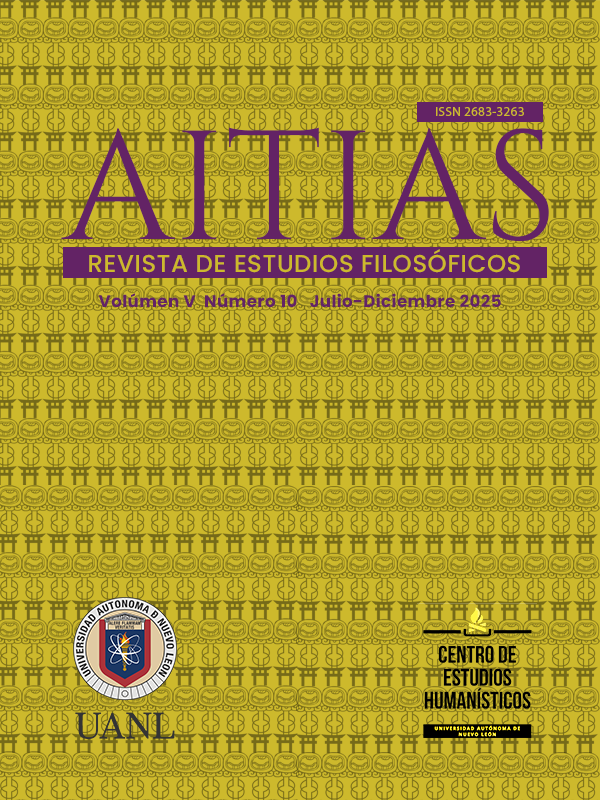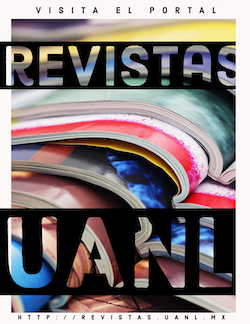El arte en la era digital: teorizaciones, desafíos y reflexiones
DOI:
https://doi.org/10.29105/aitias5.10-116Palabras clave:
Arte contemporáneo, artefacto, autenticidad, cultura digital, Inteligencia ArtificialResumen
El impacto de la cultura digital y la Inteligencia Artificial se ha constituido en un tema central en el arte contemporáneo, al apuntar hacia interrogantes de tal relevancia como lo son la autenticidad de la obra artística, la figura del autor y la validación autoral como fundamento de la pieza, y la ética de la creación artística; además de estos, las relaciones entre el arte y el mercado, la representación identitaria a través de elaboraciones simbólico-estéticas, u obras de arte, y la crítica sociopolítica y el arte comprometido son también temas de interés desde la óptica de la cultura digital. Sin el afán de agotar todos estos asuntos, en este artículo se examina la evolución de diferentes abordajes teóricos sobre el arte, desde el siglo XVIII hasta la época actual, que culmina con la concepción del arte como práctica que, independientemente del medio, conduce a la generación de “artefactos” problematizadores.
Descargas
Citas
Aznar Almazán, Yayo, Miguel Ángel García Hernández y Constanza Nieto Yusta. Los discursos del arte contemporáneo. Universitaria Ramón Areces, 2011.
Benjamin, Walter. La obra de arte en la época de su reproductibilidad técnica: Urtext. La Marca Editora, 2017.
Calvo Serraller, Francisco. El arte contemporáneo. Taurus, 2014.
Chalmers, Dominic, Christian Fisch, Russell Matthews, William Quinn y Jan Recker. “Beyond the bubble: Will NFTs and digital proof of ownership empower creative industry entrepreneurs?” Journal of Business Venturing Insights 17 (2022) https://doi.org/10.1016/j.jbvi.2022.e00309. DOI: https://doi.org/10.1016/j.jbvi.2022.e00309
Ferrer, Xavier, Tom van Nuenen, Jose M. Such, Mark Coté y Natalia Criado. “Bias and Discrimination in AI: A Cross-Disciplinary Perspective”. IEEE Technology and Society Magazine 40, n°. 2 (2021): 72–80. https://doi.org/10.1109/MTS.2021.3056293. DOI: https://doi.org/10.1109/MTS.2021.3056293
Gronlund, Melissa. Contemporary Art and Digital Culture.Routledge, 2017. DOI: https://doi.org/10.4324/9781315676852
Gryz, Jarek y Marcin Rojszczak. “Black Box Algorithms and the Rights of Individuals: No Easy Solution to the ‘Explainability’ Problem”. Internet Policy Review 10, n°. 2 (2021): 1–24. https://doi.org/10.14763/2021.2.1564. DOI: https://doi.org/10.14763/2021.2.1564
Heinich, Nathalie. El paradigma del arte contemporáneo: estructuras de una revolución artística. Traducido por Agustín Temes y Étienne Barr.Casimiro, 2017.
Hermerén, Göran.Art and Artificial Intelligence. Elements in Bioethics and Neuroethics Series. 1ra ed. Cambridge University Press, 2024. DOI: https://doi.org/10.1017/9781009431798
Hope, Cat y John Ryan. Digital Arts: An Introduction to New Media Bloomsbury New Media Series. 1raedición. Zed Books, 2014 https://doi.org/10.5040/9781501388347. DOI: https://doi.org/10.5040/9781501388347
Laddaga, Reinaldo. Estética de laboratorio: estrategias de las artes del presente. Los sentidos. 1ra ed. A. Hidalgo, 2010.
Locke, Larry G. y Grace Hodgdon. “Gender Bias in Visual Generative Artificial Intelligence Systems and the Socialization of AI”. AI & SOCIETY, (2024) https://doi.org/10.1007/s00146-024-02129-1. DOI: https://doi.org/10.1007/s00146-024-02129-1
Nadini, Matthieu, Laura Alessandretti, Flavio Di Giacinto, Mauro Martino, Luca Maria Aiello y Andrea Baronchelli. “Mapping the NFT Revolution: Market Trends, Trade Networks, and Visual Features”. Scientific Reports 11 n°. 1 (2021): 20902. https://doi.org/10.1038/s41598-021-00053-8. DOI: https://doi.org/10.1038/s41598-021-00053-8
Peist, Nuria. El éxito en el arte moderno: trayectorias artísticas y proceso de reconocimiento. Lecturas. Serie Ha. del arte y de la arquitectura. Abada, 2012.
Rebentisch, Juliane. Teorías Del Arte Contemporáneo: Una Introducción. Estètica & Crítica Series, v. 46. 1ra ed. Universidad de València Servicio de Publicaciones, 2021.
Sorgner, Stefan Lorenz. Philosophy of Posthuman Art. 1. Auflage. Posthuman Studies. Schwabe Verlagsgruppe AG Schwabe Verlag, 2023. DOI: https://doi.org/10.24894/978-3-7965-4569-6
Taylor, Grant D. When the machine made art: the troubled history of computer art. International texts in critical media aesthetics. Bloomsbury Academic, 2014.
Wu, Yankun, Yuta Nakashima y Noa Garcia. “GOYA: Leveraging Generative Art for Content-Style Disentanglement”. Journal of Imaging 10 n°. 7 (2024): 156. https://doi.org/10.3390/jimaging10070156. DOI: https://doi.org/10.3390/jimaging10070156
Zhou, Eric y Dokyun Lee. “Generative artificial intelligence, human creativity, and art”. PNAS Nexus 3, n°. 3 (2024) https://doi.org/10.1093/pnasnexus/pgae052. DOI: https://doi.org/10.1093/pnasnexus/pgae052
Zhou, Mi, Vibhanshu Abhishek, Timothy Derdenger, Jaymo Kim y Kannan Srinivasan. “Bias in Generative AI”. arXiv(2024) https://doi.org/10.48550/arXiv.2403.02726.
“Ai Weiwei”, Lisson Gallery, https://www.lissongallery.com/artists/ai-weiwei
Ann Hirsch, http://therealannhirsch.com/info.html
David Arroyo, "'Racismo' tecnológico en el coche autónomo: detecta peor a las personas negras", El Mundo, publicado en marzo 26, 2019, https://www.elmundo.es/motor/2019/03/26/5c99277421efa07c438b4632.html
Eduardo Kac, https://www.ekac.org/
“Extra ear”, Stelarc, publicado en 2019, http://stelarc.org/_.php#page/1
Frances Stark, https://frances-stark.com/
Grand Canal - Art Video Collector, “Binary Lives *Steina and Woody Vasulka - Peter Kirby / 1996”, publicado en diciembre, 2024, https://www.youtube.com/watch?v=uYyR6EWbPC0
“Hito Steyer”, MoMA, https://www.moma.org/artists/43752-hito-steyerl
Orlan, https://www.orlan.eu/es/
“Rabih Mroue”, Tabakalera, https://www.tabakalera.eus/es/rabih-mroue/
Refik Anadol, https://refikanadol.com/
“Robbie Barrat”, AIartists.org, https://aiartists.org/robbie-barrat
“Ryan Trecartin”, Guggenheim, https://www.guggenheim.org/artwork/artist/ryan-trecartin
Tania Bruguera, https://taniabruguera.com/inicio/
Trevor Paglen, https://paglen.studio/
Descargas
Publicado
Cómo citar
Número
Sección
Categorías
Licencia
Derechos de autor 2025 Jesús Eduardo Oliva Abarca

Esta obra está bajo una licencia internacional Creative Commons Atribución-NoComercial 4.0.
Los autores/as que publiquen en esta revista aceptan las siguientes condiciones:
1. Los autores/as conservan los derechos de autor y ceden a la revista AITÍAS el derecho de la primera publicación, con el trabajo registrado con la licencia de atribución de Creative Commons CC-BY, que permite a terceros utilizar lo publicado siempre que mencionen la autoría del trabajo y a la primera publicación en esta revista.
2. Los autores/as pueden realizar otros acuerdos contractuales independientes y adicionales para la distribución no exclusiva de la versión del artículo publicado en esta revista (p. ej., incluirlo en un repositorio institucional o publicarlo en un libro) siempre que indiquen claramente que el trabajo se publicó por primera vez en AITÍAS, Revista de Estudios Filosóficos del Centro de Estudios Humanísticos de la UANL.












